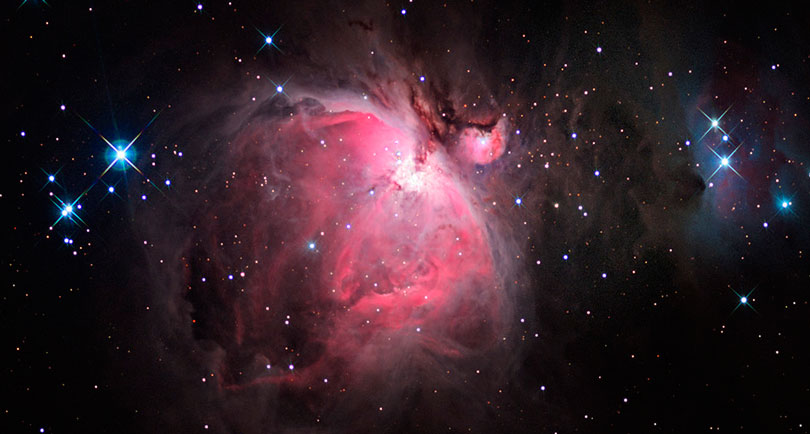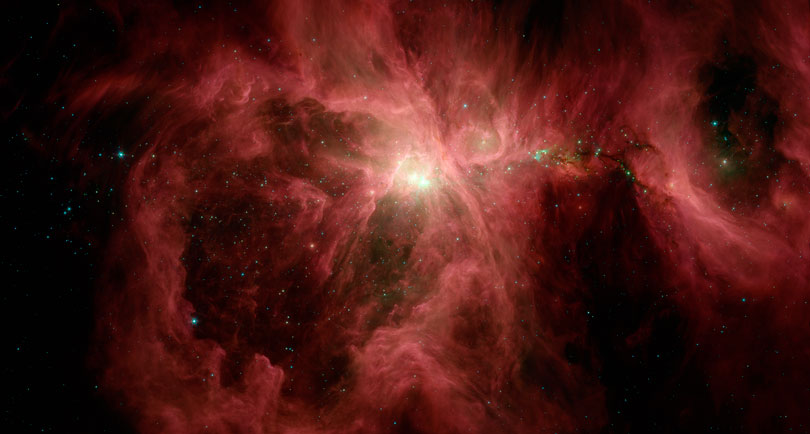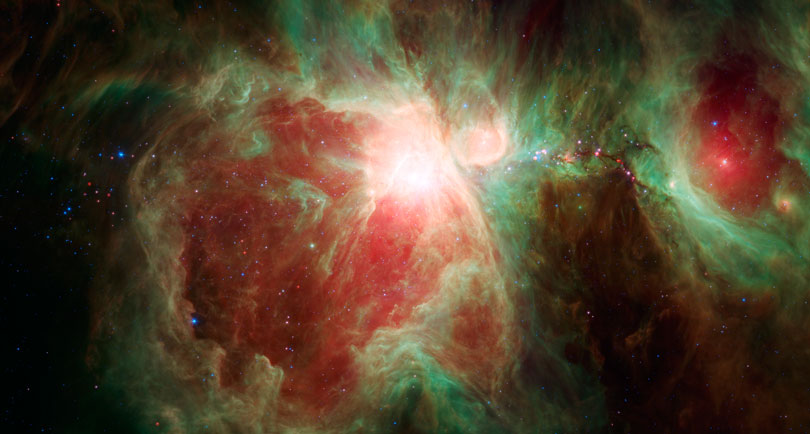- GALAXIES
- INFRARED WORLD
- INTERACTING GALAXIES
- MILKY WAY
- STAR BIRTH
- STAR DEATH
- GALAXIES
- INFRARED WORLD
- INTERACTING GALAXIES
- MILKY WAY
- STAR BIRTH
- STAR DEATH
Star Birth
The Orion Nebula



Visible:
Default View
Near Infrared:
LESS
MORE
Mid Infrared:
LESS
MORE
The Orion Nebula
The Orion Nebula is well studied in infrared light. Capturing longer wavelengths lets us peer deeper into the increasingly cold, dense dust clouds that harbor young stars. These baby stars begin to pop out in the near-infrared. The longest wavelengths of infrared light begin to show the glow of the coldest, densest filaments of dust.
Visible:
The Orion Nebula shines with the glow of hot gas.
Near Infrared:
Dust begins to glow in the infrared.
Mid Infrared:
Mid-infrared light shows the warm dust (red).
CREDITS:
Visible: NOAO/AURA/NSF/A. Block/R. Steinb. Near-infrared: NASA/JPL-Caltech/T. Megeath (University of Toledo, Ohio). Mid-infrared: NASA/JPL-Caltech/T. Megeath (University of Toledo, Ohio).